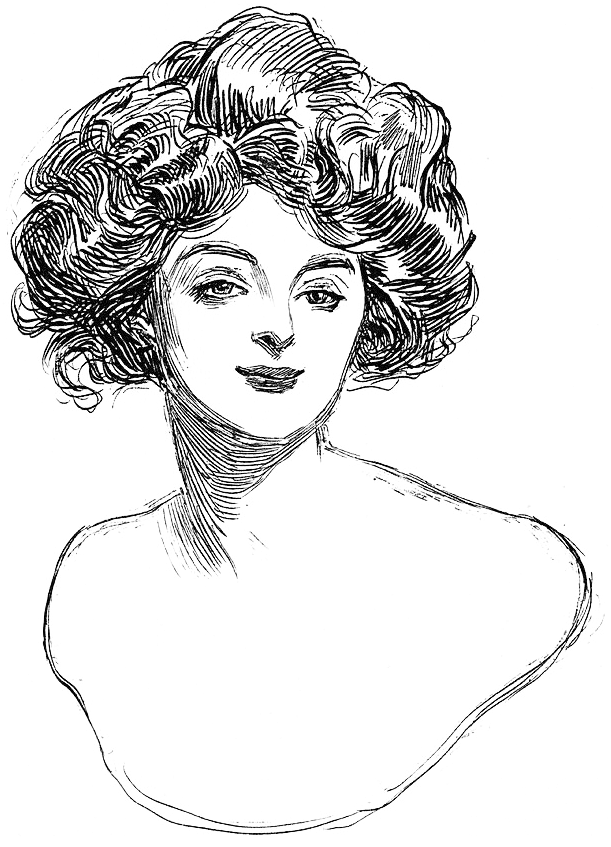Overview

The Gibson Girl was the personification of the feminine ideal of physical attractiveness as portrayed by the pen-and-ink illustrations of artist Charles Dana Gibson during a 20-year period that spanned the late 19th and early 20th century in the United States and Canada. The artist saw his creation as representing the composite of "thousands of American girls."
The Gibson Girl Image

The Gibson Girl image that appeared in the 1890s combined elements of older American images of contemporary female beauty, such as the “fragile lady” and the “voluptuous woman”. From the “fragile lady” she took the basic slender lines, and a sense of respectability. From the “voluptuous woman” she took a large bust and hips, but was not vulgar or lewd, as previous images of women with large busts and hips had been depicted. From this combination emerged the Gibson Girl, who was tall and slender, yet with ample bosom, hips and buttocks. She had an exaggerated S-curve torso shape achieved by wearing a swan-bill corset. Images of her epitomized the late 19th- and early 20th-century Western preoccupation with youthful features and ephemeral beauty. Her neck was thin and her hair piled high upon her head in the contemporary bouffant, pompadour, and chignon (“waterfall of curls”) fashions. The statuesque, narrow-waisted ideal feminine figure was portrayed as being at ease and stylish.
Conflict of New and Traditional Values

Taking part in the suffrage movement was something more associated with the New Woman, another cultural image of women that emerged around the same time as the Gibson Girl. As a more popular version of the New Woman, the Gibson Girl both undermined and sanctioned women’s desires for progressive sociopolitical change. The New Woman was the more disconcerting of the two images at the time as she was seen as an example of change and disruption within the old patterns of social order, asking for the right to equal educational and work opportunities as well as progressive reform, sexual freedom and suffrage. Whilst the Gibson Girl took on many characteristics of the New Woman, she did so without involving herself in politics and thus did not appear to contemporaries at the time to be usurping traditionally masculine roles as the New Woman was deemed to. She therefore managed to stay within the boundaries of feminine roles without too much transgression.